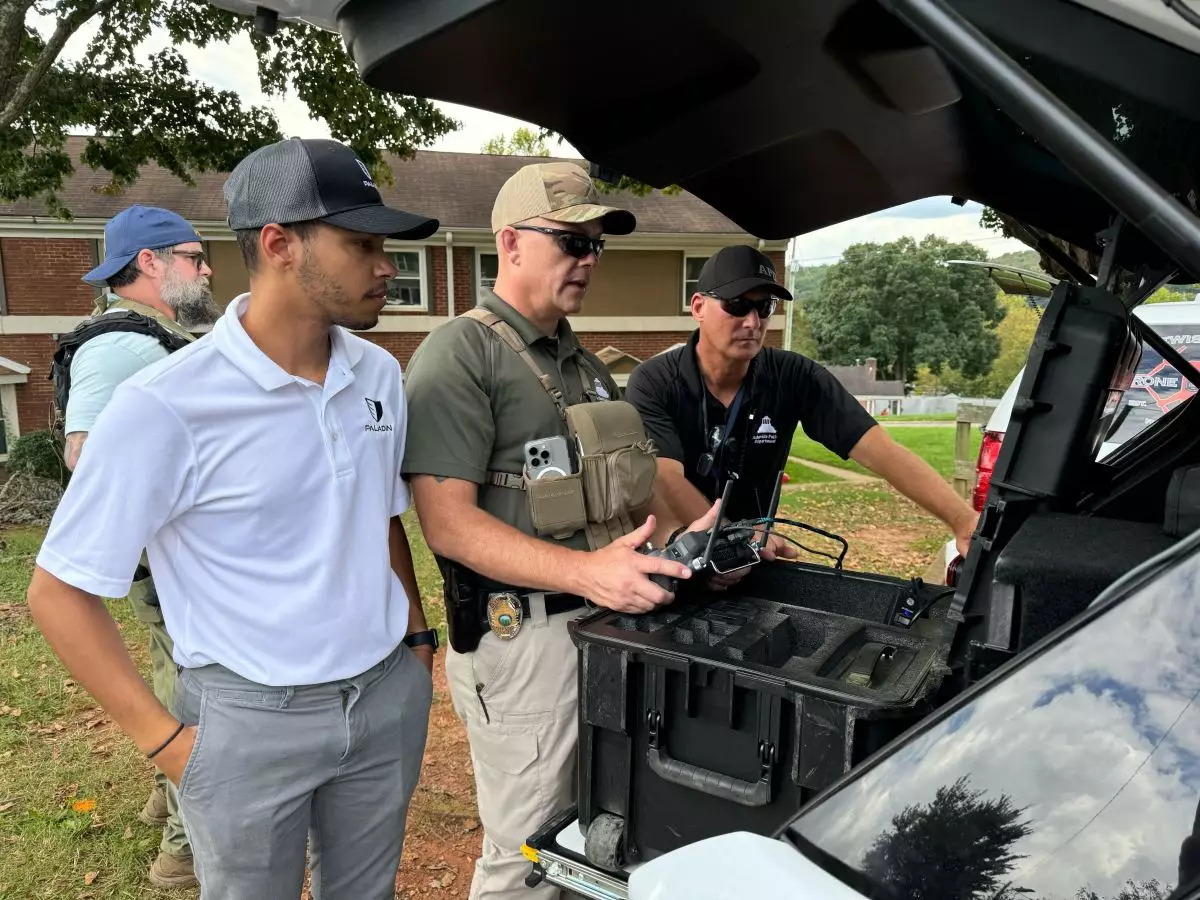The advent of drone technology has ushered in a new era of innovation, particularly within the realm of public safety. This evolution takes center stage with Paladin, a drone startup specializing in enhancing emergency response systems. Their recent deployment during Hurricane Helene in Asheville, North Carolina, epitomizes how modern technology can be harnessed to mitigate the impact of natural disasters. This article examines Paladin’s journey, the technology it employs, and the broader implications for public safety operations.
From Vision to Reality: The Creation of Paladin
Founded by Divy Shrivastava, Paladin came to life from a deeply personal experience. During his teenage years, a friend’s house fire lingered in his memory, highlighting the critical gaps in response times and situational awareness that accompany emergency calls. Fueled by the desire to enhance public safety infrastructure, Shrivastava began developing the concept for Paladin while pursuing education, ultimately dropping out to join the Thiel Fellowship. This pivot allowed the company to formally launch in 2018, with sales beginning in 2021 and a rapid expansion thereafter.
The motivation driving Paladin is more than just business; it reflects a commitment to societal betterment. In leveraging drone technology, Paladin aims not just to provide a novel product but also to address pressing issues in emergency response, including the alarming stats concerning miscalls and slow emergency services.
The Technology Behind Paladin’s Operations
Paladin’s impressive technology enables drones to be deployed in under 90 seconds post-911 call, ensuring that first responders have real-time information before they even arrive at the scene. This rapid response capability is particularly crucial in areas such as Asheville, where geographical barriers and communication failures can impede traditional emergency services. By operating drones remotely from its headquarters in Houston, Paladin effectively overcomes these obstacles.
One of the standout features of Paladin’s drone technology is its adaptability; the software is compatible with various drone models and designed to be straightforward for emergency responders to operate. It also addresses crucial limitations; the drones can provide a live feed to first responders, allowing them to assess the situation and allocate resources efficiently.
Funding and Future Prospects
Paladin’s success has not gone unnoticed in the investment community. In a recent funding round, the company raised $5.2 million, led by Gradient, Google’s AI fund, among other esteemed investors. This funding is earmarked for enhancing their software capabilities, expanding marketing efforts, and solidifying the company’s presence in the public safety space. The capacity for continuous development of their technology places Paladin in a strong position to redefine emergency response measures across the country, particularly in resource-limited regions.
Paladin’s ability to clear 10-25% of unnecessary calls by providing immediate situational assessments offers immense value, especially to smaller police departments operating with few resources. This operational efficiency reflects a promising potential to reshape how public safety departments respond to emergencies, ultimately allowing them to focus on genuine crises requiring immediate attention.
While the deployment of drone technology raises valid concerns regarding misuse and privacy invasion, Shrivastava takes a cautious approach regarding its application. Paladin’s software is specifically programmed to activate only upon a confirmed 911 call, fundamentally ensuring that it is not used for patrolling or surveillance. Furthermore, Paladin is committed to adhering to drone regulations across all states, which is vital in fostering trust among the communities they serve.
Investors and stakeholders may be wary of the potential for drone technology to infringe on civil liberties, making transparency and compliance a top priority for companies like Paladin. Clear protocols that govern how the technology operates are crucial in preventing misuse, thereby reinforcing the notion that drones can serve as indispensable tools for community safety rather than instruments of surveillance.
The growing interest in utilizing drones for emergency response is not confined to Paladin alone; other startups, such as Prepared, demonstrate an expanding market focused on improving public safety through technology. With requests for drone-assisted technology on the rise from public safety departments, the landscape of emergency response is undergoing a seismic shift.
As we move deeper into the 21st century, the integration of advanced technology into public safety infrastructure will likely become a standard practice. Companies like Paladin are at the forefront of this transformation, promising a future where drones not only enhance operational efficiency but also save lives during crises. The balancing act between innovation and ethical considerations will determine the trajectory of such technologies, ultimately shaping the effectiveness and acceptance of drones in public safety initiatives.

